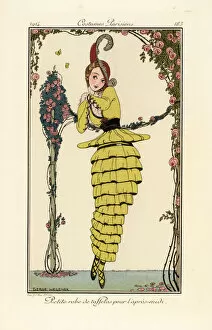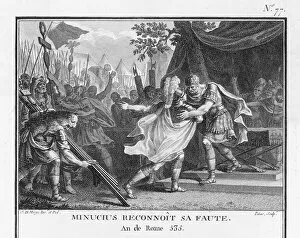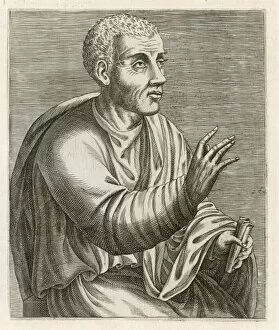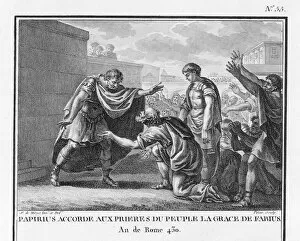Fabius Collection
"Fabius: A Roman Rhetorician and a Man of Many Faces" Marcus Fabius Quintilianus, known simply as Fabius
All Professionally Made to Order for Quick Shipping
"Fabius: A Roman Rhetorician and a Man of Many Faces" Marcus Fabius Quintilianus, known simply as Fabius, was a prominent Roman rhetorician who lived during the first century. His teachings on oratory and public speaking have left an indelible mark on the art of persuasion. In one corner of history, we find a woman in a stunning yellow taffeta afternoon dress, her elegance mirroring the grace with which Fabius delivered his speeches. She embodies the refined eloquence that he advocated for. On another canvas, we see a woman in a large toile skirt, fear etched across her face as she encounters a spider. This image reminds us that even great minds like they are be vulnerable to irrational fears – perhaps it was this vulnerability that allowed him to connect with his audience on a deeper level. In contrast to these delicate portrayals is another depiction - this time as an authoritative figure clad in morning tailored suit and wielding a cane. This representation highlights his commanding presence and ability to captivate crowds with his words alone. But beyond the realm of human affairs lies nature's own tribute to Fabius' legacy. The Tiger leafwing, Orsis bluewing, and Ceretes thais moth flutter through fields and forests just as gracefully as he once commanded attention from eager listeners. Even artists were inspired by Fabian themes; Jan Fabius created vivid illustrations capturing scenes from Sunday school gatherings where young minds were shaped under moral guidance. Yet not all depictions are flattering; John Leech's satirical piece titled "Fabius, the slow coach" pokes fun at those who criticized him for being cautious in military matters. It serves as both critique and reminder that even great men have their detractors. Another artwork by Leech portrays "His Excellency Q Fabius offering Peace or War to the Carthaginian Senate.



















